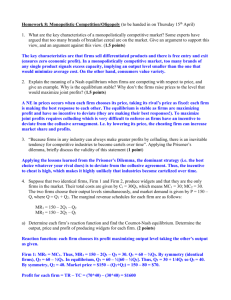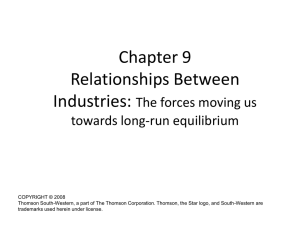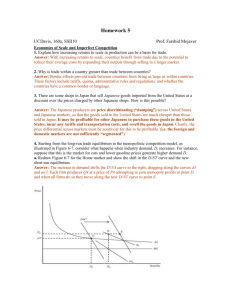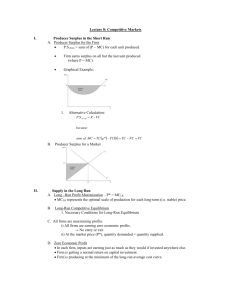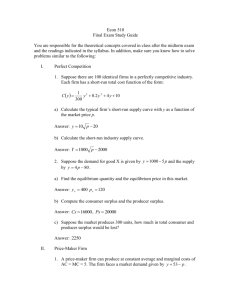A Zero-Profit Paradox
advertisement
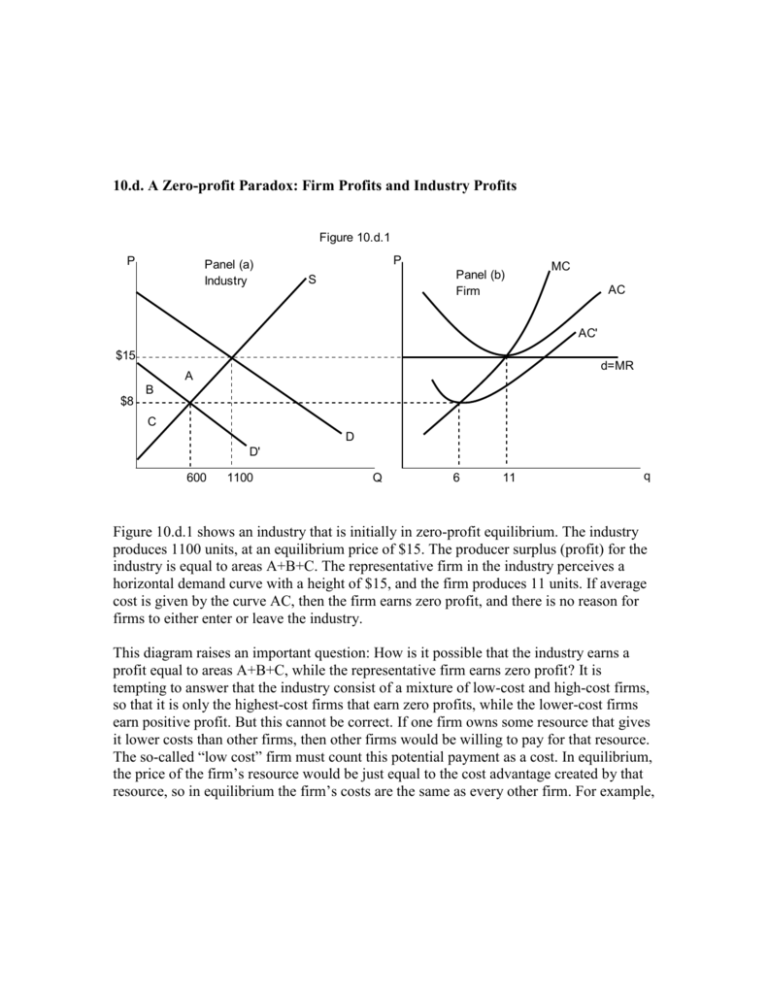
10.d. A Zero-profit Paradox: Firm Profits and Industry Profits Figure 10.d.1 P Panel (a) Industry P Panel (b) Firm S MC AC AC' $15 d=MR A $8 B C D D' 600 1100 Q 6 11 q Figure 10.d.1 shows an industry that is initially in zero-profit equilibrium. The industry produces 1100 units, at an equilibrium price of $15. The producer surplus (profit) for the industry is equal to areas A+B+C. The representative firm in the industry perceives a horizontal demand curve with a height of $15, and the firm produces 11 units. If average cost is given by the curve AC, then the firm earns zero profit, and there is no reason for firms to either enter or leave the industry. This diagram raises an important question: How is it possible that the industry earns a profit equal to areas A+B+C, while the representative firm earns zero profit? It is tempting to answer that the industry consist of a mixture of low-cost and high-cost firms, so that it is only the highest-cost firms that earn zero profits, while the lower-cost firms earn positive profit. But this cannot be correct. If one firm owns some resource that gives it lower costs than other firms, then other firms would be willing to pay for that resource. The so-called “low cost” firm must count this potential payment as a cost. In equilibrium, the price of the firm’s resource would be just equal to the cost advantage created by that resource, so in equilibrium the firm’s costs are the same as every other firm. For example, one wheat farmer might own good land while another owns bad land. It might seem that the farmer with the good land would earn higher profits than the farmer with the bad land, but this ignores the fact that good land costs more than bad land. In equilibrium, the prices of the two kinds of land will be bid to a level that makes both farmers’ costs the same! At first, this only makes the zero-profit paradox more difficult. If all firms really have the same cost, and they all earn zero profit, how can the industry have positive profit? We can answer this by returning to figure 10.d.1. Suppose the demand for the good (call it wheat) falls from D to D’. The price of wheat will fall from $15 to $8, and the producer surplus (profit) earned in the industry falls from A+B+C to C. If the firm’s average cost remained at AC, then a price of $8 would cause the firm to lose money. But the fall in the price of wheat will cause the price of wheat-growing land to fall too, and the firm’s average cost will fall from AC to AC’. In equilibrium, all firms earned zero profit at a price of $15, and they still earned zero profit at a price of $8. But somehow the industry profit fell by –A-B. Exactly who suffered this loss? It must have been the owners of the wheat-growing land. This means that it was those same landowners who were earning the profits (A+B+C) in the first place. This resolves the zero-profit paradox: The profits earned in the industry (A+B+C) were being paid to the owners of specialized resources— in this case to landowners. But the firms themselves, being forced to pay market value for that land, earned zero profit.


